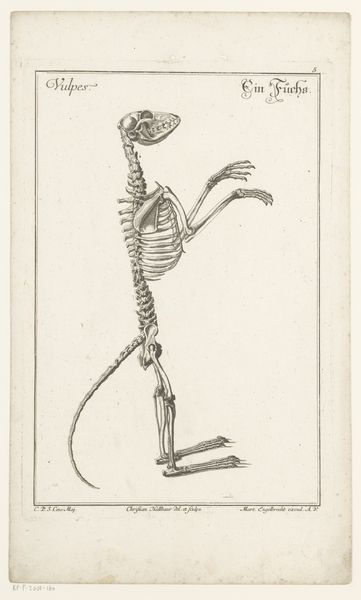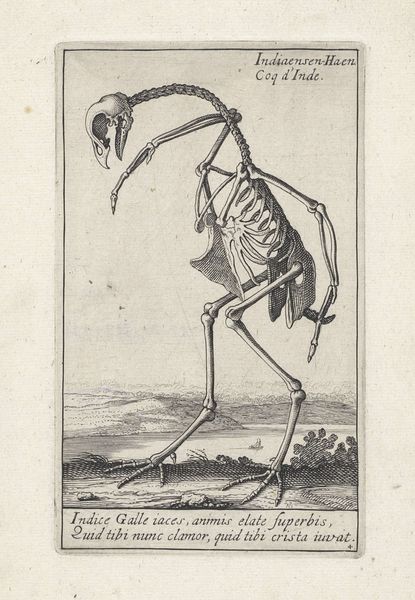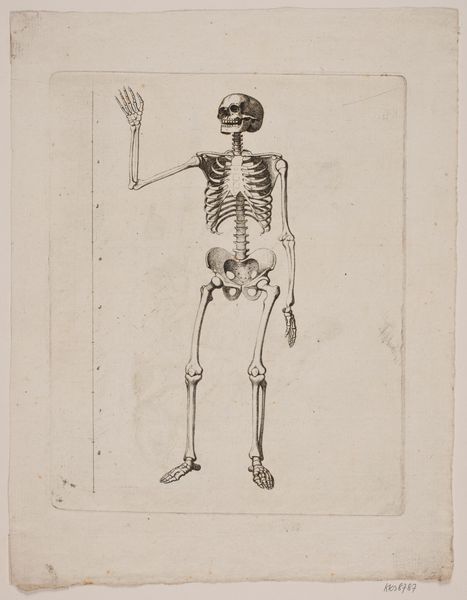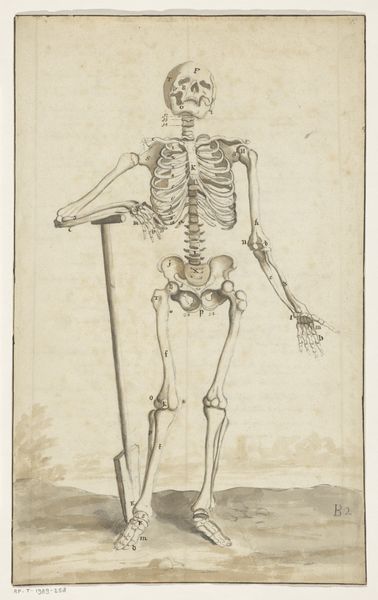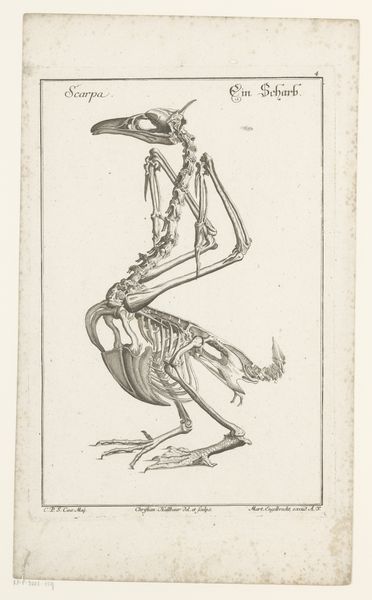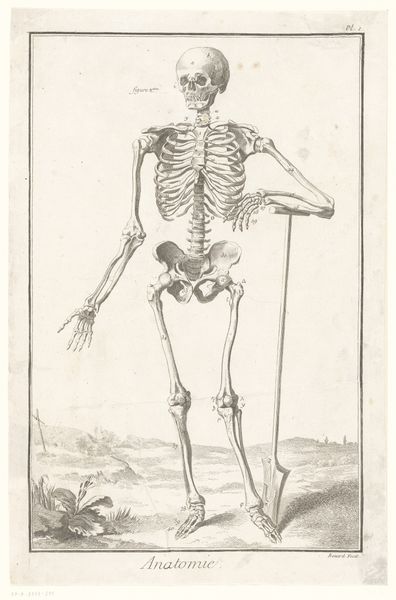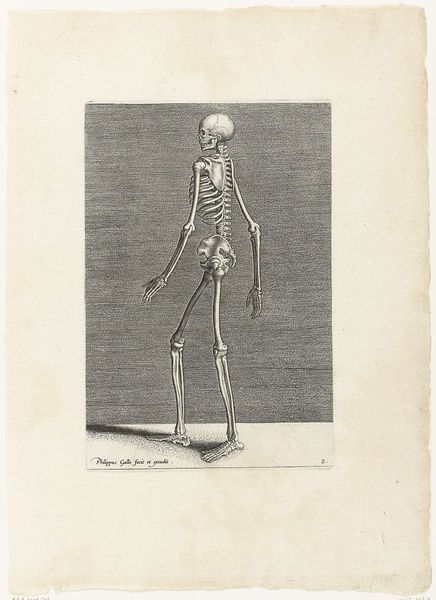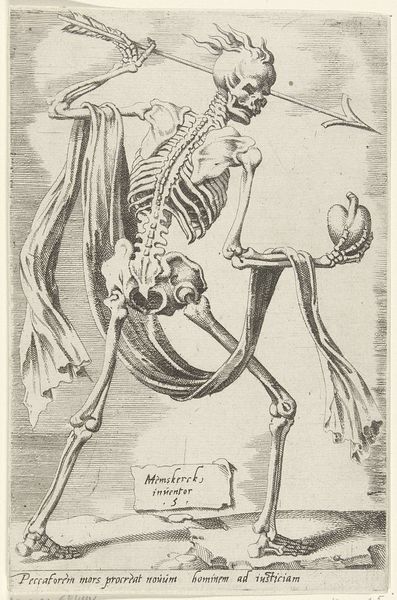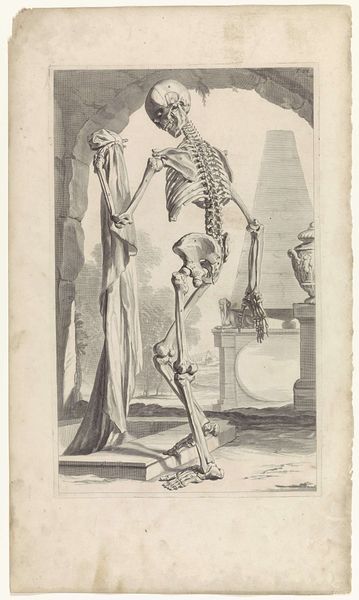
drawing, ink, engraving
#
drawing
#
baroque
#
old engraving style
#
figuration
#
ink
#
engraving
Dimensions: height 308 mm, width 208 mm
Copyright: Rijks Museum: Open Domain
This print of a meerkat skeleton was made in the 18th century by Christian Hallbaur, using engraving. Note the incredible precision and control required to render each tiny bone, and the subtle variations in line weight that give the skeleton a sense of depth and volume. Hallbaur was working at a time when European scientists were turning their attention to classifying the natural world. Engraving was the perfect medium for this purpose: its capacity for exact detail allowed for the creation of accurate and reproducible images. Think of it as the equivalent of a modern-day photograph, but achieved entirely by hand. The engraver would have used a tool called a burin to cut lines into a copper plate. Ink would then be applied to the plate, and wiped away from the surface, leaving ink only in the incised lines. Finally, the plate would be pressed onto paper, transferring the image. This painstaking process highlights the labor involved in producing scientific knowledge in the pre-digital age. We can appreciate how much effort went into this image, connecting art, science, and craft.
Comments
No comments
Be the first to comment and join the conversation on the ultimate creative platform.
